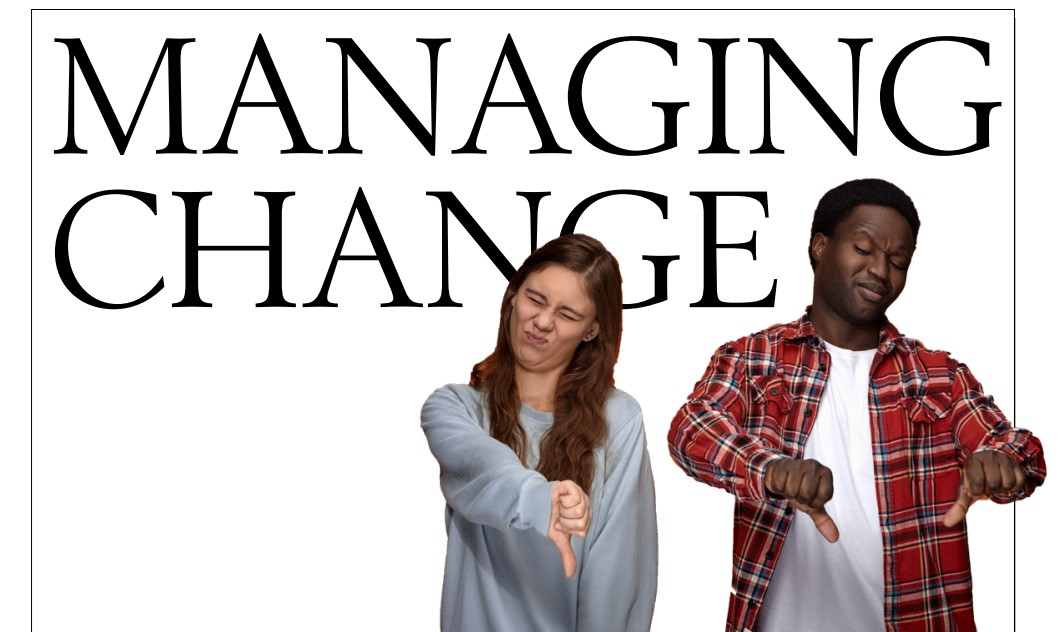The Role of HR in the Change Management Process
By Olivia Constantine
Director, Human Capital, Unicomer (Trinidad) Limited

LINKAGE Q1 (2023) - Woman's Leadership: Embrace Equity
“Change management” sounds self-explanatory. Managing change seems like an activity most do every day. However, for the business environment, where stakeholders’ needs and expectations can make or break a successful change, change management is less an everyday occurrence and more an in-depth consideration and analysis. Many underestimate the impact of the activities involving change management, and believe that anyone can do it.
Defining Change Management
Change management entails controlled identification and implementation of required changes, which typically look like a new project, or a shift in organisational thinking, or a desire to change its culture. It can be argued that the ability to lead and implement adequate change management is the bread and butter of business success. But change management is not always easy and requires skill and experience in navigating and influencing the journey.
The Role of HR in Managing Change
The responsibility of influencing and guiding this journey for many organisations lies primarily within its Human Resources support unit. Done properly, HR makes sure that the process of change uses appropriate philosophies and frameworks. From the moment the change is conceptualised, to the implementation and all through the evaluation of its success (or failure), HR should be consulted in all stages.
Applying a chosen structure or framework helps an organisation to visualise and apply valuable insights from stakeholders on how to mitigate risk, respond to resistance or detractors, and even to design appropriate and effective communication messages. HR also takes into account employees' well-being during the implementation of the change management process.
Designing and Planning the Change
The process itself involves a high level of consultation and analysis. The journey starts with defining the change and conceptualising what the successful outcome looks like. The HR practitioner starts asking key questions such as:
• Who will be involved in this change?
• Who are our stakeholders?
• When will the change be effected?
Delving deep into these questions helps the organisation determine whether or not the team or teams affected will support the change, and assess the risk associated with the change as it affects different stakeholders or groups.
The HR change practitioner will work with the organisation to determine the resources needed for this change, and whether or not those resources are available. This enables them to create a plan that outlines how each team and individual will be affected by the change, defines their roles, and explains how they will interact with each other. In this planning stage HR asks questions such as:
• How will we engage our stakeholders?
• What are the risks that need to be considered and addressed?
Identifying Risks
HR will assist the organisation in identifying risks and creating risk-mitigating plans to adequately address these risks so that change progresses as unhindered as possible. This is an area often overlooked and can be crippling in the conceptualisation and planning phases. A risk-averse culture may find itself over-thinking, over-analysing and even over-mitigating the identified risks. A risk-seeking culture may fail to see opportunities to create certainty or stability and may tend to want to address the risks as they come.
Equally important is the consultation of stakeholders in identifying these risks. When enough information about the change is shared and communicated, and the right questions are asked, stakeholders are generally forthcoming with concerns, recommendations and questions.
Getting Ready for the Change
Every change forces organisations to consider if the right skills and experience are already present to support the change. HR should report on any and all gaps in skill and expertise required to implement, reinforce and maintain the change, and plan how to bridge any gap(s) identified.
Implementing the Change
During the implementation stage, communication, execution of training, activating catalysts for change as well as effecting risk mitigation strategies are focal action points. HR advises the organisation on how to monitor and manage resistance.
Who needs to know related information to the change? When and what is the best way to deliver these messages? Who is going to deliver these messages? These are some of the key communication elements that the HR change practitioner has to consider in order to design and execute a robust communication plan to support change outcomes.
HR has a crucial role in creating a positive and supportive environment. It's important to ensure that employees feel supported during the transition period. HR professionals need to be available to answer questions, provide support and offer guidance. It's important to make sure that employees feel confident and capable of using the new systems or processes.
Evaluating the Change
Once the changes have been implemented, it's just as important for HR to assess their effectiveness as it was during the planning stages. HR needs to monitor how employees have adapted to the new systems or procedures, and evaluate their performance against the expectations that were set at the beginning of the process. If there are areas that need improvement, HR needs to work with managers to make sure that they're addressed.
Evaluation is an essential part of the change management process. It helps identify any areas where things didn't go as planned and provides an opportunity to make changes for the better. HR professionals need to identify areas for improvement and recommending solutions. They should also be open to feedback from employees and other stakeholders.
Sustaining the Change
There is a school of thought that proffers that change cannot be accepted until it has been implemented. Even so, if there is an opportunity to revert to ‘old ways’ and back into the zone of comfort, often humans will find difficulty in sustaining the change that has been implemented. The HR change practitioner must continue in her or his efforts to communicate, revisit, realign and support the organisation in all efforts to reinforce and sustain the change.
ABOUT THE AUTHOR
Olivia Constantine is the Director of Human Capital at Unicomer (Trinidad) Limited.
